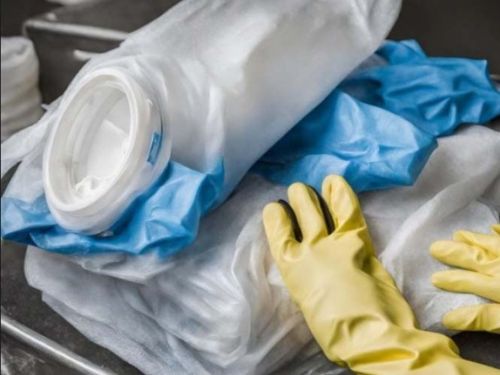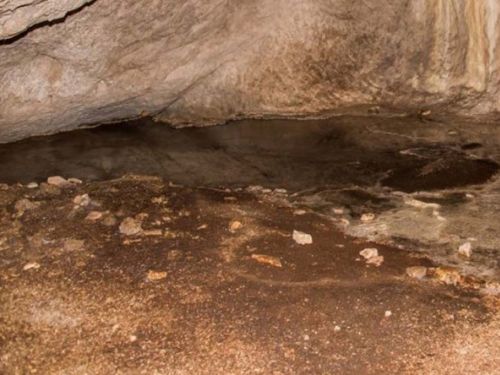Guano Cleanup Services
Guano, the excrement produced by bats, can pose serious health risks due to the potential presence of pathogens and bacteria. The inhalation of fungal spores in bat guano can lead to bacterial infections and potentially fatal respiratory diseases, such as Histoplasmosis and Cryptococcosis.
We highly recommend that you enlist the help of professionals for bat removal and subsequent Guano Cleanup. Texas Bat Solutions is equipped with the necessary protective gear and we always follow proper safety measures and disposal protocols to minimize the risk of exposure to harmful pathogens.

After safely removing bats from a structure, we seal entry points, repair structural vulnerabilities, and begin our cleanup process. The first step of cleaning bat guano involves thoroughly assessing the affected area to identify the extent of bat droppings. Next, we vacuum, sweep, and disinfect the surfaces contaminated with guano.
In cases where bat feces has penetrated porous materials, we use an enzyme cleaner to ensure thorough sanitation. After removal, disposal and decontamination procedures are followed to prevent further contamination. We also offer Odor Removal Services to ensure your living or working space is Safe for Occupancy.
Health Risks Associated with Bat Guano
The most common health hazard of guano cleanup is inhaling airborne particles. Disturbing or cleaning contaminated areas without proper protective measures can lead to a fungal infection. Direct skin contact with guano can also pose risks, especially if there are cuts, abrasions, or open wounds.
Histoplasmosis
One scary pathogen associated with guano is Histoplasma capsulatum. This fungus releases spores into the air, and inhaling these spores can cause a respiratory infection called Histoplasmosis. Common symptoms are flu-like, including fever, cough, fatigue, and chest pain. In severe cases, Histoplasmosis can spread beyond the lungs, affecting other organs and systems, leading to a potentially fatal respiratory infection.

Cryptococcosis
Another pathogen found in bat guano is Cryptococcus neoformans, a yeast-like fungus. Exposure to this fungus can lead to Cryptococcosis, an infection primarily affecting the respiratory and central nervous systems. Cryptococcus can thrive in the organic matter present in the guano, utilizing it as a nutrient source. Several studies have documented the prevalence of Cryptococcus in guano, and bats are likely unwitting carriers of Cryptococcus, facilitating the dispersal of the fungus across different geographic locations.
Other Health Concerns
Beyond respiratory concerns, Guano is also a breeding ground for Salmonella and E. coli bacteria. The dust generated from dried guano contains allergenic proteins that may trigger allergic responses, including respiratory issues, skin rashes, and eye irritation. Individuals with pre-existing respiratory conditions, such as asthma, may be particularly susceptible to these allergens.
Preventative Measures
Individuals involved in guano cleanup face occupational health risks, and implementing safe cleanup practices is essential. Engaging professional assistance like Texas Bat Solutions ensures that the process is conducted with expertise and adherence to local regulations.
We use proper personal protective equipment (PPE), masks, rubber gloves, and protective clothing when necessary. We also wet the guano to minimize the release of airborne particles, using HEPA-filtered vacuums and enzyme-based cleaners and avoiding dry sweeping or dusting.

Contact Us For Guano Cleanup!
Text / Call (832) 726-2771 OR Fill Out The Form Below
Understanding Bat Guano

Guano is a valuable component of natural ecosystems, serving as a potent fertilizer and supporting cave biodiversity. As the primary consumers in these environments, bat feces contains organic matter and is a crucial component of the cave ecosystem.
Guano contains high levels of Nitrogen, Phosphorus, and Potassium, which are all essential elements for plant growth. Microorganisms break down the organic material, creating a nutrient cycle supporting diverse life forms within cave systems.
Historical Uses of Guano

Use in Fertilizer: The historical use of bat guano as a fertilizer can be traced back to ancient civilizations, where it was recognized for enhancing soil fertility and promoting robust crop yields. Its organic nature and slow-release properties make it a sustainable and eco-friendly option for agricultural practices.
In the mid-19th century, guano, along with other natural fertilizers like bird poop, played a pivotal role in the fertilizer revolution. As industrialization progressed, the demand for fertilizers increased to support growing agricultural needs.

Resource for Nitrates: During the 19th century, bat dropping’s became a source of nitrates, a key ingredient in producing fertilizers and explosives. Islands rich in bird and bat droppings became targets for extraction, leading to an industry centered around guano mining. This trade played an intricate role in agriculture, providing a valuable source of crop nutrients and in producing gunpowder and explosives.
Guano Islands Act of 1856: This legislation allowed U.S. citizens to claim uninhabited islands containing guano deposits, providing a legal framework for harvesting resources. This act was a response to the growing demand for guano as a fertilizer and contributed to the establishment of the industry.


Modern Uses of Bat Guano

In the modern era, guano continues to be valued in sustainable agriculture.
Recognizing its nutrient-rich composition, some organic farmers incorporate bat feces into their farming practices as a natural and eco-friendly fertilizer.
In commercial agriculture, synthetic fertilizers have largely replaced traditional guanobased fertilizers due to their ease of production and widespread availability. However, the organic farming movement has sparked renewed interest in natural fertilizers and some companies have shifted back to producing and marketing guano-based fertilizers.

More Information About Guano:
How Long is Bat Guano Toxic?
Bat feces can remain toxic for an extended period, especially if undisturbed. The duration of toxicity depends on various factors, including the environmental conditions where the guano is found. The spores may remain viable for extended periods in damp or humid environments. Professional bat removal services are equipped to handle a bat infestation and bat guano safely, minimizing the risk of exposure to harmful pathogens.
What Does Bat Poop Look Like?
Bat feces has a distinct appearance characterized by a shiny, dark color, often ranging from brown to black. The texture of bat droppings can be granular or powdery, resembling small pellets. In some cases, the droppings may clump together, forming clusters. The shiny appearance is due to the excretion of uric acid, which gives the Guano a glossy sheen.
Can Exposure to Bat Droppings Make You Sick?
Yes, exposure to guano can make you sick due to harmful microorganisms, particularly fungi and bacteria. The primary health concern associated with bat feces guano is the risk of inhaling fungal spores, leading to respiratory infections.

